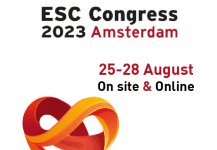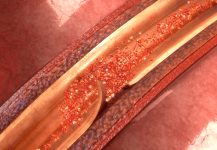Acute myocardial infarction (AMI) continues to be a clinically significant condition due to its association with morbidity and mortality after the initial event. Therefore, the prognostic stratification of these patients is of vital importance. One of the tools that have been used for several years for this purpose is the SYNTAX I (SS) and SYNTAX…
Substudy TALOS AMI: from Ticagrelor to Clopidogrel in Patients with High Risk of Bleeding and AMI
The preference for the use of potent P2Y12 inhibitors such as ticagrelor and prasugrel in patients with high risk of acute myocardial infarction (AMI) undergoing percutaneous coronary intervention (PCI) is based on randomized studies and current guideline recommendations. However, clopidogrel is still recommended for patients at high risk of bleeding. Several strategies have been looked…
AMI and Multivessel Disease: Can We Perform a Single Procedure?
Percutaneous coronary intervention (PCI) is considered the treatment of choice in ST-segment elevation myocardial infarction (STEMI). However, it is widely acknowledged that, in many cases, there are significant lesions in other coronary arteries. Previous randomized studies have shown that complete revascularization in a second procedure is more beneficial than intervention only in the culprit artery.…
Is Complete Revascularization Really Necessary after AMI in the Elderly?
The population over 75 is growing gradually, which entails an increase in acute myocardial infarction (AMI) in this group. As we all know, it is fairly common for AMI to present with multivessel disease. It has been shown that younger patients will benefit from complete revascularization vs. a simple resolution of the culprit vessel. However,…
What to Do in Cases of AMI with Multivessel Disease
The presence of lesions in multiple vessels is common in ST-segment elevation myocardial infarction (STEMI). It has been shown that, when they are treated in a second procedure, patients have a better outcome. To date, there is limited information available on percutaneous transluminal coronary angioplasty (PTCA) in vessels with severe non-culprit lesions during primary angioplasty.…
ESC 2023 | ARREST Trial: Is It Necessary to Have Specialized Hospitals for Cardiac Arrest?
Researchers conducted a randomized study involving 827 patients who experienced out-of-hospital cardiac arrest without ST-segment elevation myocardial infarction, and then underwent percutaneous coronary intervention. In this group, 414 patients were transferred to a specialized cardiac arrest center (CAC), while 413 were taken to the geographically closest hospital (closest emergency department, CED). The primary endpoint (PEP)…
AMI following Coronary Artery Dissection: Higher Mortality?
Though rare, spontaneous coronary artery dissection (SCAD) might lead to MI, most commonly affecting young middle aged women. In these cases, the angiographic image will present a characteristic double lumen, and an intramural hematoma in the coronary artery wall. Normally, it will be treated medically. However, a small number of cases presenting STEMI will require…
ESC 2023 | Anticoagulation After Primary PCI in STEMI Patients
The empirical prescription of anticoagulants after percutaneous coronary intervention (PCI), also know as post-procedural anticoagulation (PPA), is nowadays a common practice that uses various types of medications. Despite studies like HORIZONS-AMI and EUROMAX, in which 41% of patients received PPA, and the CCC-ACS registry, where 75% of subjects received PPA after primary PCI, European and…
ESC 2023 | ECLS-Shock
Cardiogenic shock (CS) represents the main cause of death in patients hospitalized for acute myocardial infarction (AMI). Despite advances in its management, mortality continues to be high, between 40-50% within the first 30 days. In an attempt to improve survival, early extracorporeal life support (ECLS) is being increasingly used to stabilized hemodynamics in cases of…
ESC 2023 | FIRE-Trial: Physiology Guided Complete Revascularization Benefits Elderly Patients with Myocardial Infarction
Patients over 75 with acute coronary syndrome (ACS) are often badly represented in most significant studies. In this context, the FIRE study looked to determine whether physiology guided complete revascularization is superior to culprit-only revascularization in elderly patients with multivessel disease suffering acute MI. The study included SCA patients over 75, hospitalized for both STEMI…
Crisis and Socioeconomic Disparities: Relationship with Recurrent Events After Myocardial Infarction
Socioeconomic status (SES) has been linked to recurrent atherosclerotic cardiovascular disease events (rASCVD) after myocardial infarction (MI). However, patients with low SES are underrepresented in most randomized studies. This may be largely due to a higher incidence of metabolic syndrome, insufficient use of recommended medication, such as statins, for secondary prevention and insufficient participation in…







